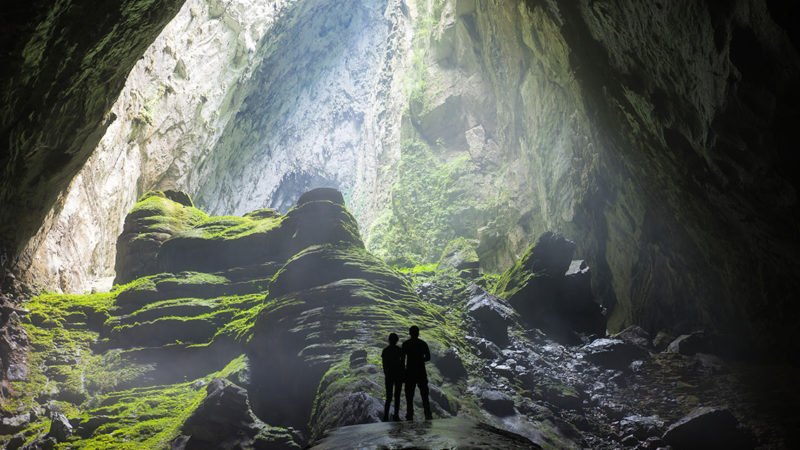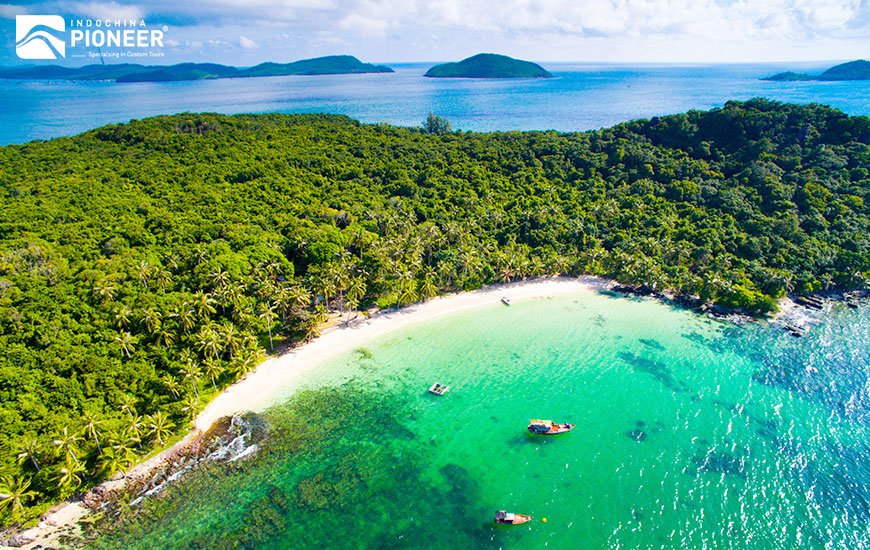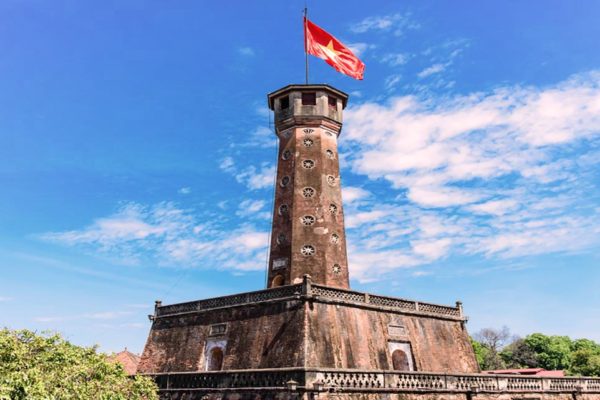Why you can visit Vietnam all-year-round

Breath-taking landscapes, friendly and hospitable locals, affordability, Vietnam is an amazing place to go with it all. When planning your Vietnam itinerary, you may wonder if you can explore the country in different seasons. While Vietnam lies entirely in the tropic zone, its climate varies from region to region. This will, surprisingly, works in your favour because you can visit Vietnam all-year-round!

In the north, from Sapa to Hanoi, there are 4 seasons: Spring, Summer, Autumn, and Winter.
In the central region, from Nha Trang to Hue, sunshine lasts throughout the year, except for the months of November and December when heavy rainfalls occur. Dalat, at an altitude of 1500m, is cooler than the coastal area, particularly from November to March. Da Nang and Hue both experience typhoon activity from mid-October to mid-December when the climate becomes cooler, more overcast and wet.
In the south, from Ho Chi Minh City to Phan Thiet, there are two main seasons: wet and dry. The wet season falls between April and September, with sudden heavy showers that don’t last very long. The dry season spans the months of October to March, with higher temperatures and long days of sunshine, followed by cooler nights.
For your reference, here is a summary of the weather conditions in Vietnam.
- January
This is the best time in Vietnam with dry conditions and sunny days throughout the country. The temperature varies from cool to hot, from the north to the south, respectively.
- February
Weather conditions continue to be at their best with dry conditions and sunshine for days along the entire length of the country. February is an excellent month for beachgoers. In the north, skies are clear with just a bit of rain, whilst in the mountains and highlands, favorable conditions for trekking and adventure activities return
- March
March marks the peak season for travel in Vietnam. The country’s weather is characterized by cool and occasional light rain in the north but stays warm and dry in the center and the south. The beaches of the southern and central regions enjoy blue skies, plenty of sunshine, and hot weather. In the mountains and highlands, ideal conditions for trekking and adventure activities continue.
- April
April becomes unpredictable, as the season changes from spring to summer. Whilst the north heads towards its hot, wet summer, there are still plenty of dry days. The beaches in the center of the country are still at their very best and whilst rainfall starts to become more likely in the south, clear dry days are more prevalent.
- May
Temperatures start to climb across the country. The north starts to see more rain, leading the way into a hot, sticky summer. The central region inches towards its peak, whilst the south slowly begins to slip towards its wet season, a welcome relief from the steamy heat of the past few months. Beaches remain good options at this time in Hoi An, Danang, Nha Trang, and Phu Quoc.
- June
In June, temperatures and humidity rise significantly. In Hanoi, the heat is made worse by the volume of traffic and dust. In Hue and Hoi An, the heat is aggravated by the intense amount of sunlight. In Ho Chi Minh City, the heat is coupled with frequent rain. If heat avoidance is crucial, the highlands of Tam Dao, Sapa and Dalat offer a cooler and more pleasant climate.
- July
You will hear the saying “Nong qua!” (“It’s too/so hot”) everywhere you go in July. The north enters the peak of summer with high temperatures and frequent rain. The center of Vietnam remains hot and predominantly dry with the odd light shower. The south experiences the midst of its wet season with daily downpours. Visitor numbers are lower than in previous months, although the beaches in the central region still offer a great deal of sunshine. Trekking is off the cards for most regions, however, with more rain in the northern mountains and central highlands.
- August
In August, the weather is a mixed bag. The peak of summer continues in the north, with high temperatures and continuous rains, while the south experiences the peak of its wet season. The center of Vietnam stays hot and dry with the occasional rain. Tourist numbers are generally low even though the central beaches still guarantee a lot of sunshine. The highland areas remain cool but rainy, so trekking is still off the cards in most regions.

- September
The north becomes drier with less rainfall as conditions in the central regions and the south go the other way with rain becoming more frequent. With the rain, however, the climate in places such as Hue, Hoi An, and Ho Chi Minh City is more pleasant than in the previous months. On the coast, storms and sometimes typhoons could happen.
- October
October favors the North as the weather continues improving with clearer skies and less rainfall, a well-deserved break from the high humidity of recent months. In the center, a totally different story – high rainfall and yet higher chances of stormy weather. The south begins to see a good change with less rain and a promise of the return of summer. In the central highlands and mountains in the north, great weather conditions make for excellent trekking and adventure activities.
- November
The northern regions get cooler still, while the center and the south stay warm. Showers continue on and off in Da Nang, Hue and Hoi An. November is a decent month to visit Ho Chi Minh City and the Mekong Delta, as the climate is warm and dry. Phu Quoc, Phan Thiet, and Mui Ne are also back to their best and will remain so for the next six months. Great conditions for trekking and adventure activities continue in the highlands and mountains
- December
December announces the cold to Hanoi and particularly the north-west region, such as Sapa. Snow occasionally comes and goes, but it still might be colder than expected. Both northern and southern regions are in optimum conditions, and the central regions continue to improve as the rains start to decrease. The best beaches to frequent are still Phu Quoc, Phan Thiet & Mui Ne, although Nha Trang becomes a viable alternative towards the end of the month.

In general, December to March is the best time to visit with cool weather, clear sky and less rain, ideal for all kinds of activities. The weather in the north of Vietnam also sees its best during November-March, while the perfect time to visit the central region is January-April, and it is advised to travel in the south from November to April.
Let Us Help You Plan Your Vietnam Trip.
Don’t let the planning stress you out. Tell us your travel ideas and our travel advisors are very glad to give you suggestions and guidance for your trip planning. We can tailor-make your trip according to your interests and requirements, and help to create the best Vietnam vacation for you.





